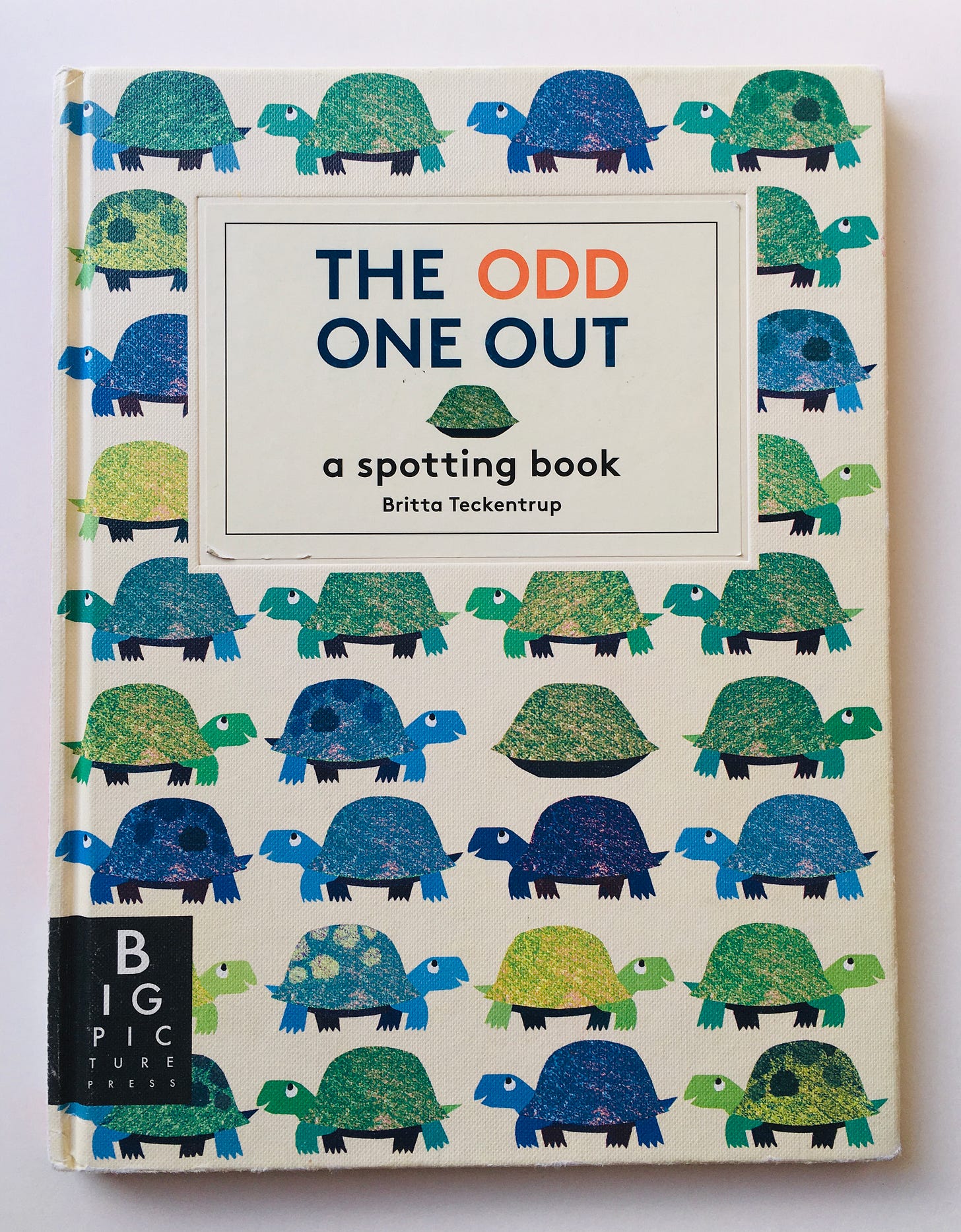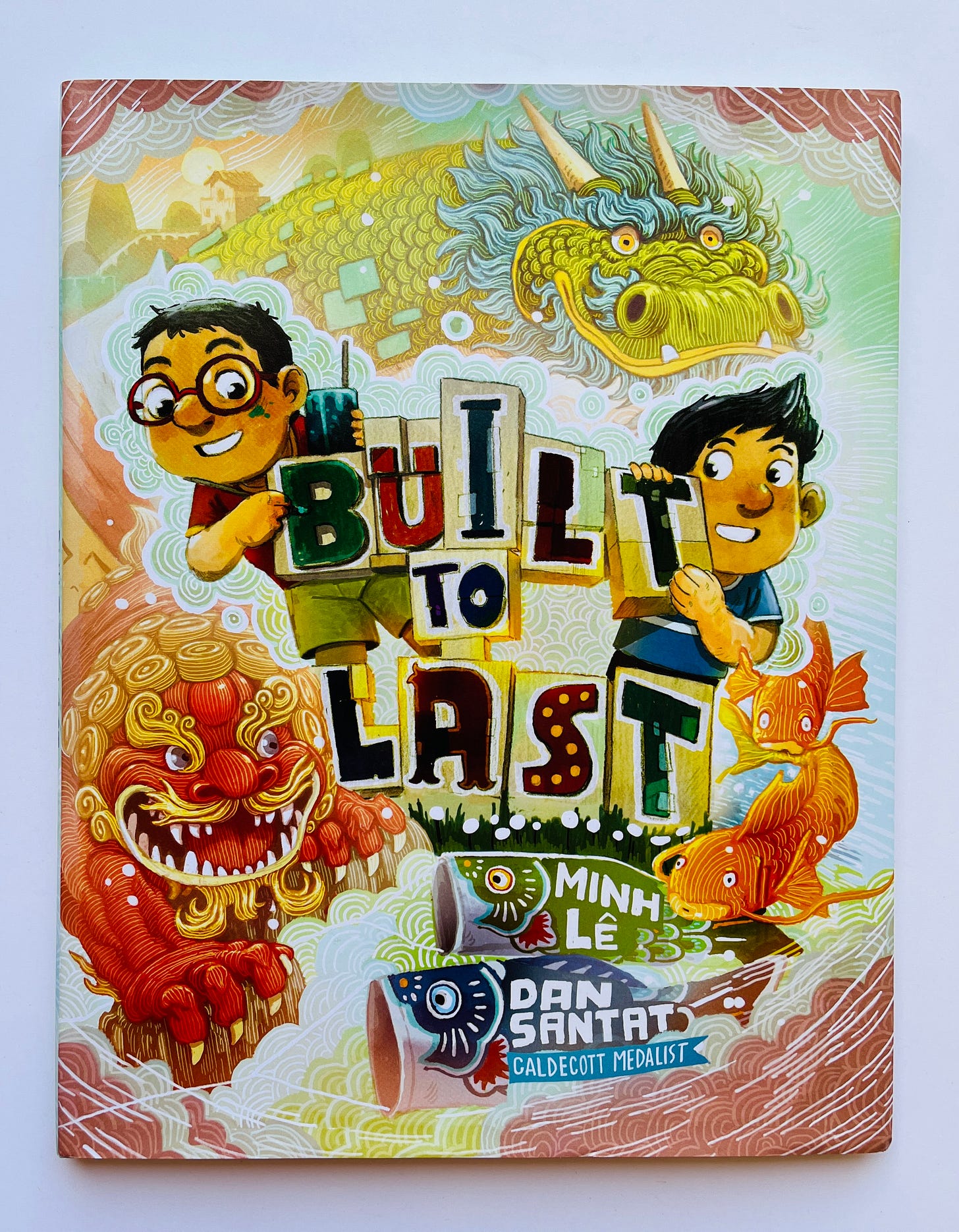Hey there, ho there, you stunning human. Congratulations on making it to another Thursday. (Not a small feat for me right now, believe me.)
I have an ask of you, before we get started today: will you forward this post to one person? Many of you have already sent to this parent/caregiver friends — thank you! — but if you haven’t, would you consider it? Other people that might like this newsletter:
grandparents/aunties/uncles (great if you are trying to offer ideas for gifts)
your kid’s teacher, school librarian, coach, therapist
the children’s librarian/s at your local library
your daycare provider or other childcare folks
expectant parents
people you “know” on social media
I believe in supporting content creators with both my money and my word-of-mouth, so I’m a forward-er when it comes to sharing content that I like and/or think might be useful to the recipient. This is the beauty of the internet in its most old school sense, on its best days, in its highest form. (And let’s be honest: the internet has not had its best days, in its highest form, in a very very very long time.)
Thank you for your help! And as always, thank you for being here.
Built to Last by Minh Lé, illustrated by Dan Santat (2024)
True story: I normally don’t click through to read PDF review copies when they’re offered to me, but as a fan of both Lê’s and Santat’s work, this time I did, and I end up replying to the publicist: “This surprised me by bringing tears to my eyes.”
Friends “by accident,” two unnamed boys build things together they could never have dreamt up on their own. Everything falls apart — in increasingly large ways, which Santat shows to great effect in his signature bright, fun-filled illustrations created with colored pencil, watercolor, and digital techniques — including their friendship. But they manage to remember the times they picked up the pieces, and picked each other up, and realize some things are too important to give up on.
The absolute brilliance of this — and the most moving part — is the contrast between what’s happening in the text, which seems to be about their projects, and what is happening in the images, which is about the projects as a metaphor for their relationship. It’s not so subtle that younger readers (ages 5-7) will miss it, but it’s poetic enough, and so beautifully done, that it will still have an impact on older ones (7-10, and, uh, 41).
If you’re interested in books about makers and making, check out my Spotlight On issue from 2021, which remains one of my favorite things I’ve created here:
The Puddle Pail by Elisa Kleven (1997)
Kleven is one of those authors (and illustrators) whose work never needs justification for me — if I see one of her books at a library sale or used book store or elsewhere, I’ll snap it up, unread, and have never been disappointed.
Once, in an email, she described her style to me as “old-timey and layered,” and she’s not wrong, but this is truly my favorite thing about her work. Her illustrations are carefully crafted from a wondrous hodge-podge of materials — the density of colors and details invite readers of all ages (ahem) to pore over the pages, no matter the title — and her stories are developed just as thoughtfully. (Basically, if you don’t know Kleven’s books, get thee to an open browser window and fix that right away.)
Here, crocodile brothers Ernst and Sol set off for the beach. Sol, who loves to collect things, has grand plans for a variety of things to collect, and encourages Ernst to make a collection of his own. Ernst is skeptical, until he discovers he can collect puddles. Sol naysays this, claiming that puddles aren’t real, and Ernst spends the rest of the story gloriously proving him wrong — collecting purple puddles, flowered ones, one full of diamonds, “lemony, letter cool” ones, and more.
This is a sweet, simple — but deceptively deep — story for preschoolers and early elementary kiddos who love to explore nature and mix it all up, but is equally valuable, I think, to artists or anyone creatively inclined. There is a magic and beauty to discovering one’s own unconventional ideas and making them real that really appeals.
Please, Puppy, Please by Spike Lee and Tanya Lewis Lee, illustrated by Kadir Nelson (2005)

Let me be clear in saying that anything Kadir Nelson illustrates, with his rich, resonant oil paints, I am 110% here for: doesn’t matter what it is, he’s unthinkably talented. And his contribution to the Please books by the Lees — this title, along with its 2002 predecessor, Please, Baby, Please — only adds to the pure, realistic fun to be found here, in this abbreviated but wildly entertaining story of two children who spend the day with their new puppy, who is a new puppy in every way. (See: chaos and disorder reign, they spend every page saying, “Please, puppy, please!” don’t run away, don’t get muddy, don’t shake off all over us when you’re wet!)
If you have a little little — 1-3 years, don’t hesitate, just buy these. They are completely delightful.
The Odd One Out: A Spotting Book by Britta Teckentrup (2014)

There are many seek-and-finds out there — the Waldo empire, of course, as well as the I Spy franchise, which I appreciate for their wide variety of titles and use of real photos, which gives them the feel of peeking inside a cabinet of curiosities no matter the topic — but I’d like to call your attention to those of Britta Teckentrup.
Teckentrup is a German illustrator with an absolutely enormous oeuvre (she has written and illustrated over 100 books), and about as many awards for that work. Her style is colorful and exceedingly modern — many, if not all, of her titles have the feel of a graphic designer who has applied her prodigious skills to children’s literature. The fact that her images seem to take precedence over her prose perhaps proves this — but more to the point, it makes her handful of seek-and-finds unique, quite good, and on another level than most of the ones out there. The Odd One Out asks readers, through short rhyming text, to find, well, the odd animal or item “out” in every picture.
You may be asking: do seek-and-finds “count?” Are they really “reading,” much less reading aloud? The simple answer is yes, absolutely.
Seek-and-finds, along with illustrations in all kinds of regular picture books, play a role in developing visual literacy — that is, interpreting and constructing meaning from visual images. I offer this from the eighth edition of Jim Trelease’s Read-Aloud Handbook edited and revised by Cyndi Giorgis (considered to be the absolute bible of reading aloud — I reviewed it in issue No. 12):
Why is visual literacy important? At home and school, our focus is usually on verbal literacy skills as we expand children’s vocabulary and enhance their ability to communicate. As adults, we have spent years accumulating vocabulary to express ourselves. We may avoid slowing down to talk about illustrations in picture books because we don’t possess the same level of confidence in our vocabulary to talk about art… Today, with the number of symbols, infographics, maps, charts, and other visual communication kids experience, it is vital for them to be able to interpret, negotiate, and make meaning from what they are seeing. This also includes illustrations they encounter in books. What better way to acquire and strengthen visual literacy skills than through pictures and conversation!
Well said.
The Prairie Thief by Melissa Wiley (2012)
The truth is that The Prairie Thief has been on my list for a long, long time. Melissa Wiley is a a friend of a friend, but moreover, this book is on so many highly recommended lists that I trust, I honestly felt guilty I haven’t read it to my kiddos.
So, I finally remedied that, but far more importantly, it did not disappoint. At all. In fact, it exceeded my expectations by a mile, which is amazing given how many people had hyped it up for me.
Here, Wiley deftly blends mystery, adventure, high stakes, a full-speed-ahead pace, and the charm of the Wild West in a title that captivated my whole family. (I started reading this aloud on an eight-hour car trip, and while reading aloud in the car is not my favorite, I barely noticed this time.)
Young Louisa Brody family’s farm becomes embroiled in a puzzling series of events when their prized possessions start disappearing — to the point where her father is arrested and she is sent to live with her terrible neighbors a mile away. One day, her younger friend spots something in the orchard that neither girl can explain — a little pointed hat that disappears into a hole; what the what? — and things only get weirder and wilder from there.
It’s impossible to talk much about this book without giving away the story so I won’t spoil it, only strongly encourage you, if you are looking for a super fun read full of magic but grounded in the real world, don’t miss this. Highly recommended for a wide age range — from preschoolers good at listening to chapter books, all the way up to late elementary kiddos (and their grownups! I cannot stress this enough!)
Thank you for reading today, thank you for sharing this newsletter with your own networks, but most of all, thank you for continuing to do the work of raising readers in your own homes, classrooms, and libraries. It matters.
Sarah








Now that I have a monthly picture book list on my library's app, I've started just adding books from your newsletter straight to the next month's list. The Puddle Pail and Built to Last went on it immediately!
We were surprised at how much we loved odd one out!! Can’t wait to check out the Santat illustrated work. Exciting